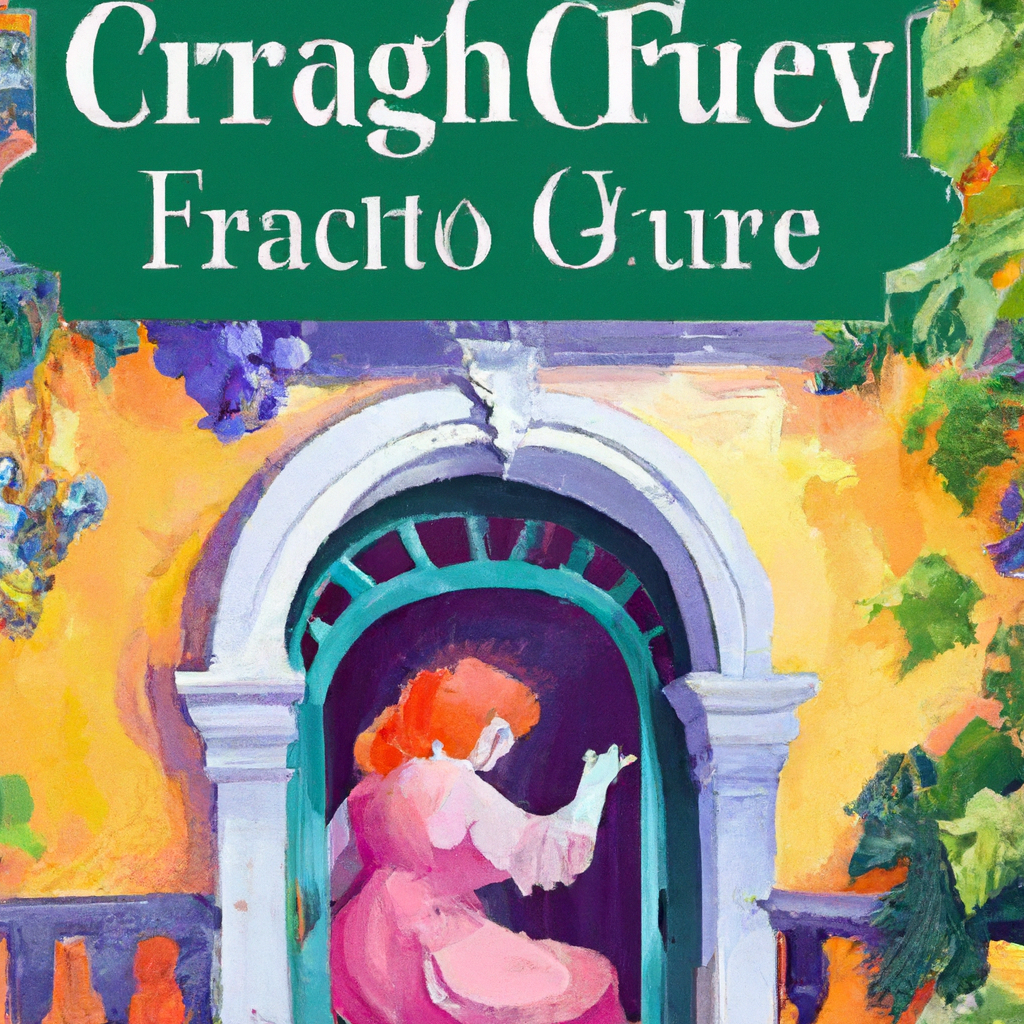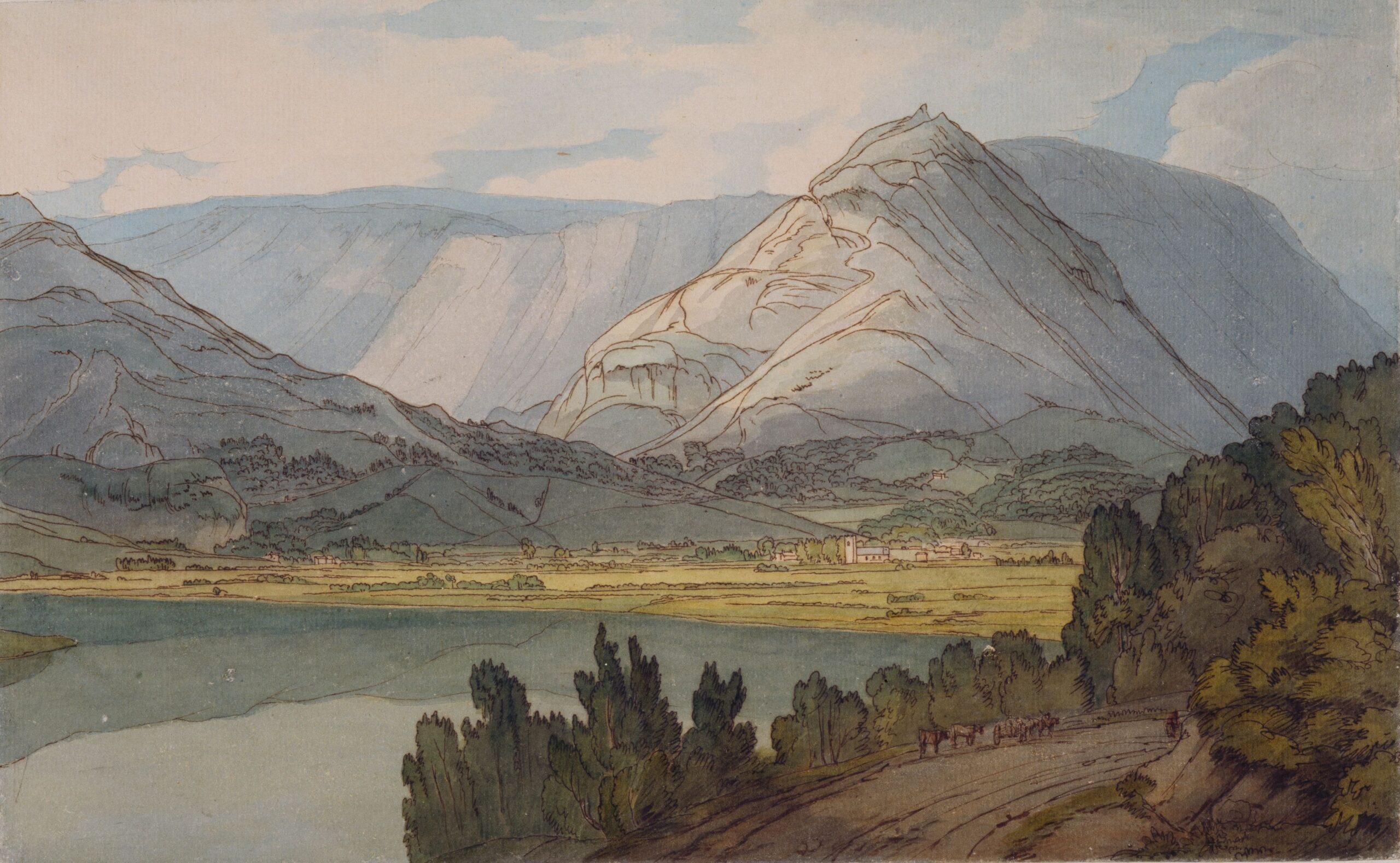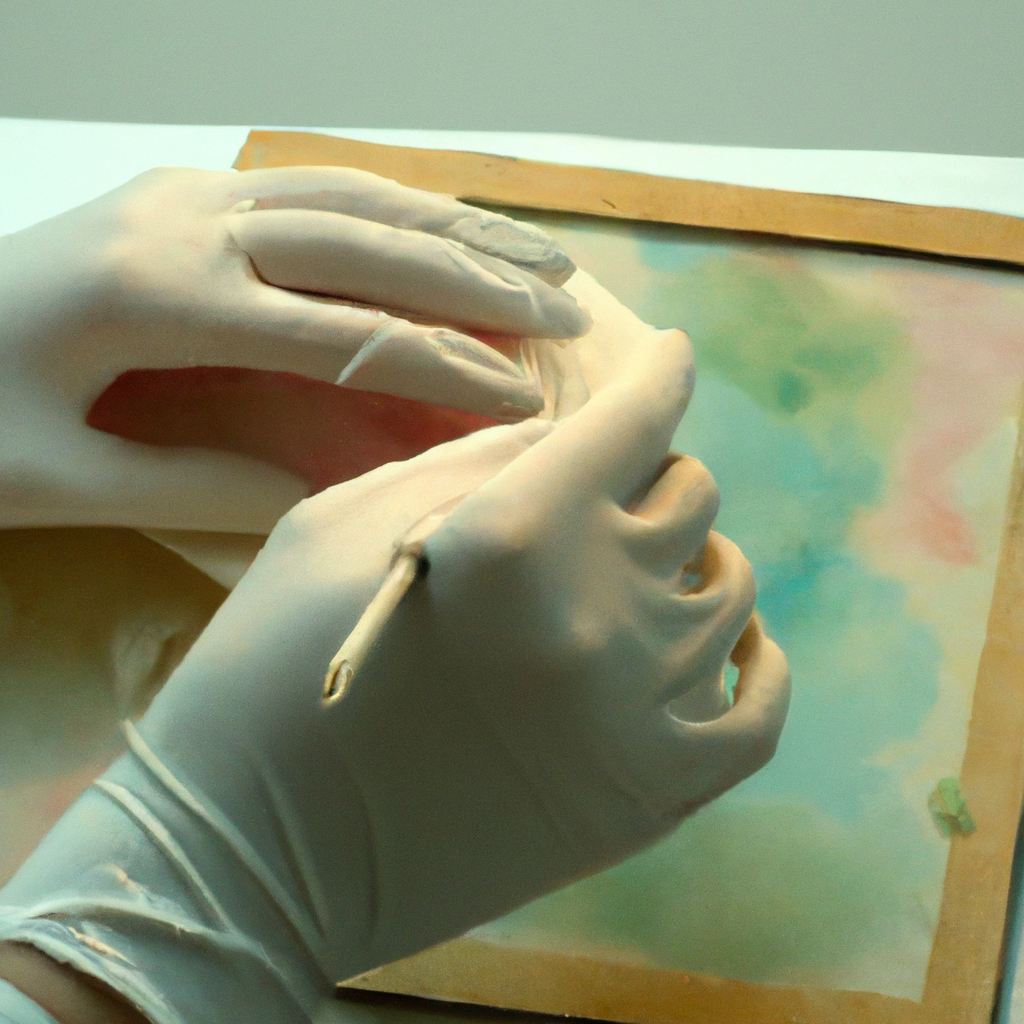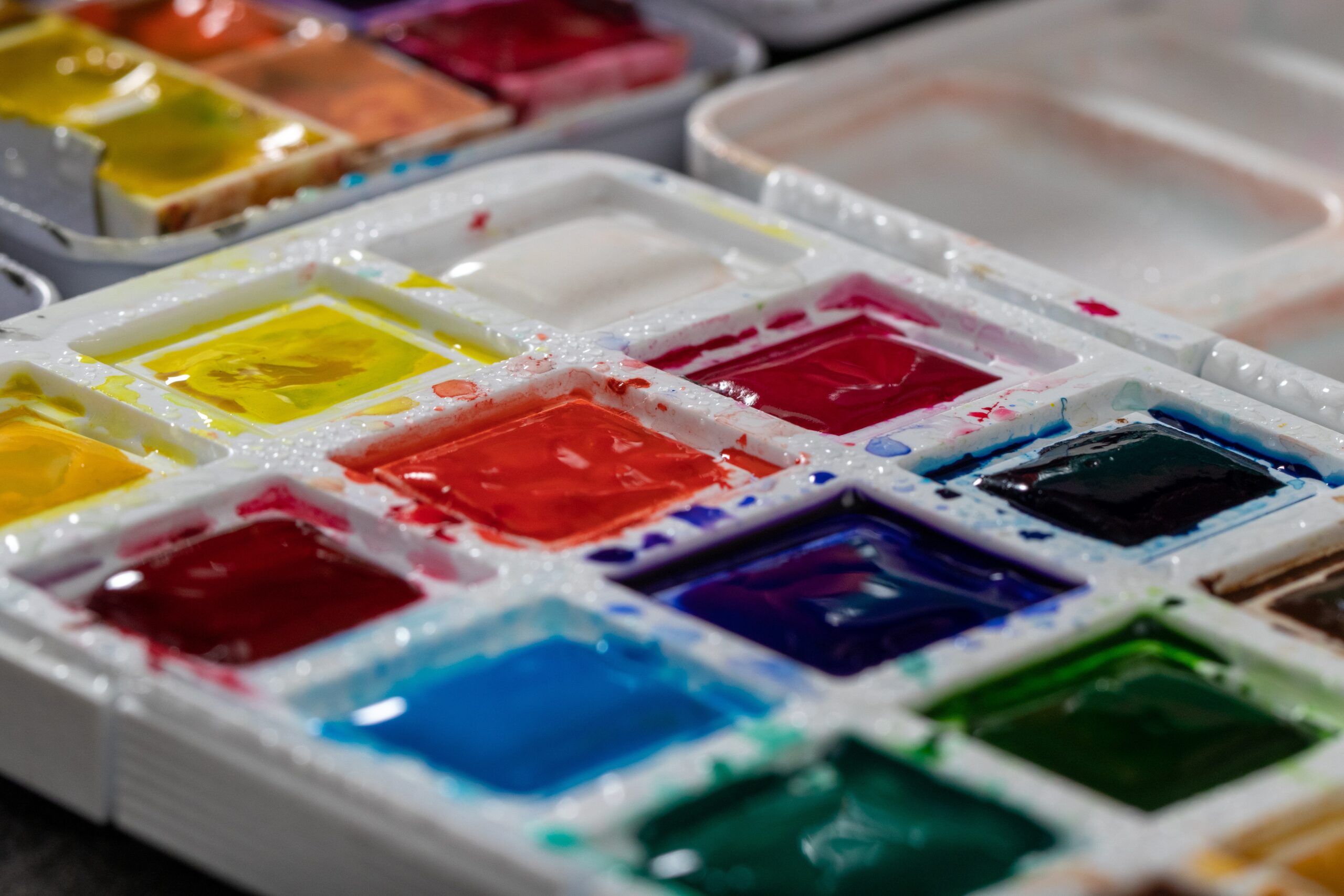In this article, you will discover essential techniques and tips on how to effectively complete a gouache painting. Whether you are an experienced artist or a beginner exploring this versatile medium, mastering the finishing touches can greatly enhance the visual impact of your artwork. From refining details and adding highlights to achieving a balanced composition, this guide will provide you with valuable insights to bring your gouache paintings to life. By following these expert suggestions, you will be able to confidently conclude your artwork with finesse and professionalism.
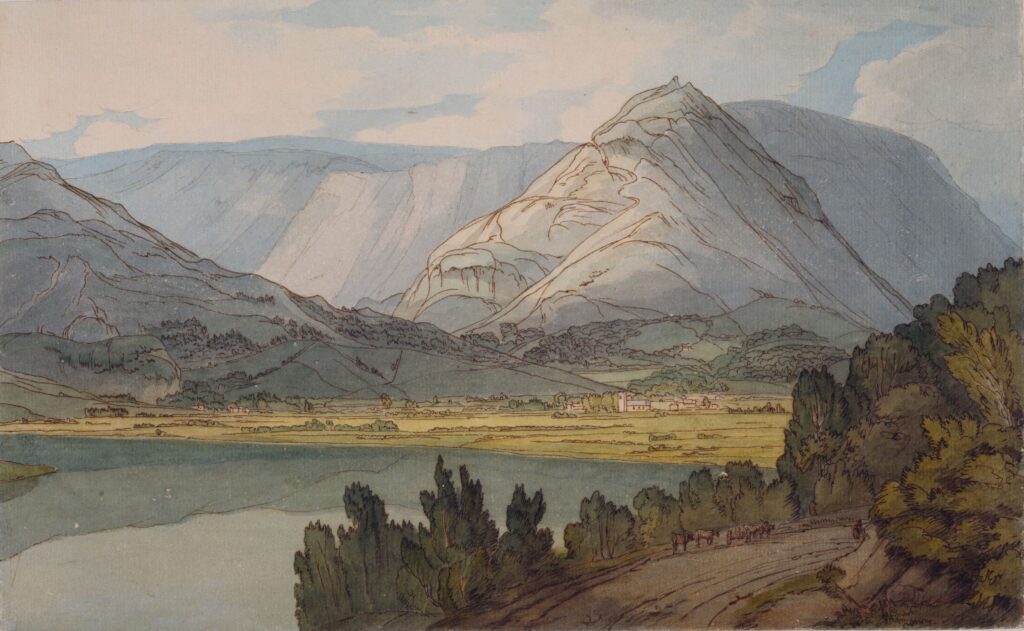
This image is property of images.unsplash.com.
Preparing for Finishing
Clean your brushes
Before diving into the finishing process, it is essential to clean your brushes thoroughly. Gouache paint tends to dry quickly, and any dried paint residue on your brushes can affect the final outcome of your work. Rinse your brushes with water, removing all traces of color, and gently reshape the bristles while they are still damp. This step ensures that your brushes are in optimal condition for achieving the desired finishing touches.
Organize your materials
To streamline the finishing process, it’s crucial to have all your materials organized and easily accessible. Arrange your paints, brushes, water containers, paper towels, and any other necessary tools within reach. This organization will prevent unnecessary interruptions and help maintain a steady workflow throughout the finishing stages of your gouache painting.
Choose a suitable workspace
Selecting the right workspace is vital for a successful finish. Find a well-lit area with good ventilation where you can comfortably work on your painting without any distractions. Ideally, choose a space where you can keep your artwork undisturbed, allowing the paint to dry naturally and evenly. A dedicated workspace fosters a focused and conducive environment for bringing your gouache painting to its fullest potential.
Protect your work area
Before getting started with the finishing touches, take measures to protect your work area. Lay down a drop cloth or cover your table with plastic wrap or old newspapers to avoid any accidental spills or stains. Additionally, consider using a mask or other protective gear if you are using fixatives or varnishes that emit potent odors. Ensuring a clean and safe work environment allows you to focus solely on enhancing your gouache painting.
Assessing Your Painting
Step back and evaluate
Take a moment to step back from your painting and evaluate it from a distance. This perspective shift allows you to see the artwork as a whole and identify any areas that need further refinement. Observe the composition, colors, textures, and overall visual impact of the piece. By taking this step, you can gain a fresh perspective and make informed decisions about potential improvements.
Check for any areas needing touch-ups
As you assess your painting, carefully inspect it for any areas that might require touch-ups. Look for uneven coverage, color discrepancies, or any missed details. Using a smaller brush, target these specific areas and apply additional paint to achieve a smooth and cohesive finish. Taking the time to correct any imperfections enhances the overall quality of your gouache painting.
Ensure the composition is balanced
A well-balanced composition is essential for a successful gouache painting. Evaluate the arrangement of objects, colors, and focal points within your artwork. Ensure that the elements are harmoniously distributed throughout the piece, creating visual interest and a sense of equilibrium. Adjust or refine any compositional elements that may be detracting from the overall balance of the painting.
Review color harmony and contrast
Color harmony and contrast play crucial roles in the visual impact of a gouache painting. Analyze the color choices you have made and consider whether they are working harmoniously together or if adjustments need to be made. Assess the overall color scheme and ensure that it conveys the desired mood or atmosphere. Additionally, evaluate the contrast between light and dark areas, making any necessary modifications to enhance depth and dimension.
Evaluate overall texture and depth
Texture and depth are significant aspects of a gouache painting, contributing to its overall visual appeal. Take a close look at the textures you have created and evaluate whether they align with your artistic vision. Consider introducing additional textures or refining existing ones to add interest and depth. By paying attention to these elements, you can elevate your gouache painting to a more refined and dynamic level.
Refining Your Details
Use fine brushes for precise work
Refining the details of your gouache painting requires the use of fine brushes. These brushes allow for more precise application, enabling you to add intricate touches that enhance the overall quality of your artwork. Select the appropriate fine brushes for the specific details you intend to refine, ensuring that they are clean and in good condition. With the right brushes in hand, you can achieve precise and defined details.
Add intricate details and highlights
Intricate details and highlights can bring your gouache painting to life. With a steady hand, add intricate details to specific elements of your artwork, focusing on areas that can benefit from enhanced definition and clarity. Amplify highlights by adding lighter shades or even using white gouache. These details and highlights convey depth and dimension, breathing life into your gouache painting.
Refine edges and contours
Well-defined edges and contours contribute to the professional look of a gouache painting. Take the time to refine any blurry or uneven edges, using a smaller brush and careful strokes to create clean lines. Pay attention to the contours of objects within your painting, ensuring that they are accurately portrayed. These refinements will add a polished finish to your artwork, lending it a sense of professionalism and precision.
Enhance textures and patterns
Texture and pattern play a significant role in the visual interest of a gouache painting. Evaluate the existing textures and patterns within your artwork and identify areas where further enhancement is needed. Use specialized brushes or techniques to add depth and detail to textures, such as the roughness of tree bark or the smoothness of water. Enhancing these elements elevates the overall quality and impact of your gouache painting.
Add final touches to small elements
In the final stages of refining, pay attention to the small elements within your gouache painting. These may include individual leaves, petals, or intricate details in the background. By adding final touches to these smaller components, you demonstrate your meticulousness and commitment to achieving a well-finished artwork. Attention to detail in these areas enhances the overall cohesiveness and visual appeal of your gouache painting.
Applying Final Layers
Build up layers for depth and richness
To achieve depth and richness in your gouache painting, consider building up layers of paint. Apply thin, transparent layers on top of dried layers, gradually intensifying colors and enhancing the overall visual impact. By layering your paint in this manner, you create the illusion of depth and enrich the tones of your artwork. Be patient and allow each layer to dry thoroughly before applying the next.
Use light washes or glazes for subtlety
Light washes or glazes can introduce subtlety and softness to your gouache painting. These transparent layers allow the underlying colors to shine through while adding depth and atmosphere. Apply these washes or glazes strategically to areas that require a more delicate touch or to create a sense of distance. Experiment with different levels of opacity and observe how they subtly transform your artwork.
Consider opaque layers for emphasis
While gouache is known for its vibrant versatility, opaque layers can be employed for emphasis in specific areas of your painting. Use a denser application of paint to make certain elements stand out or to create focal points that demand attention. This technique creates a visual contrast between opaque areas and more transparent sections, adding interest and visual impact to your gouache painting.
Apply additional transparent or translucent layers
In addition to building up opaque layers, consider applying additional transparent or translucent layers to enhance the complexity of your gouache painting. Transparent layers allow for the intermingling of colors, creating unique visual effects and contributing to the overall richness of the artwork. These layers can be utilized to amplify the subtleties within your painting, such as reflections or shadows.
Experiment with layering techniques
Layering techniques offer endless opportunities for experimentation with your gouache painting. Explore different methods, such as drybrushing, scumbling, or sgraffito, to achieve a variety of textures and effects. By embracing the versatility of layering techniques, you can unleash your creativity and create a standout finished piece. Don’t be afraid to take risks and push the boundaries of your artistic expression.
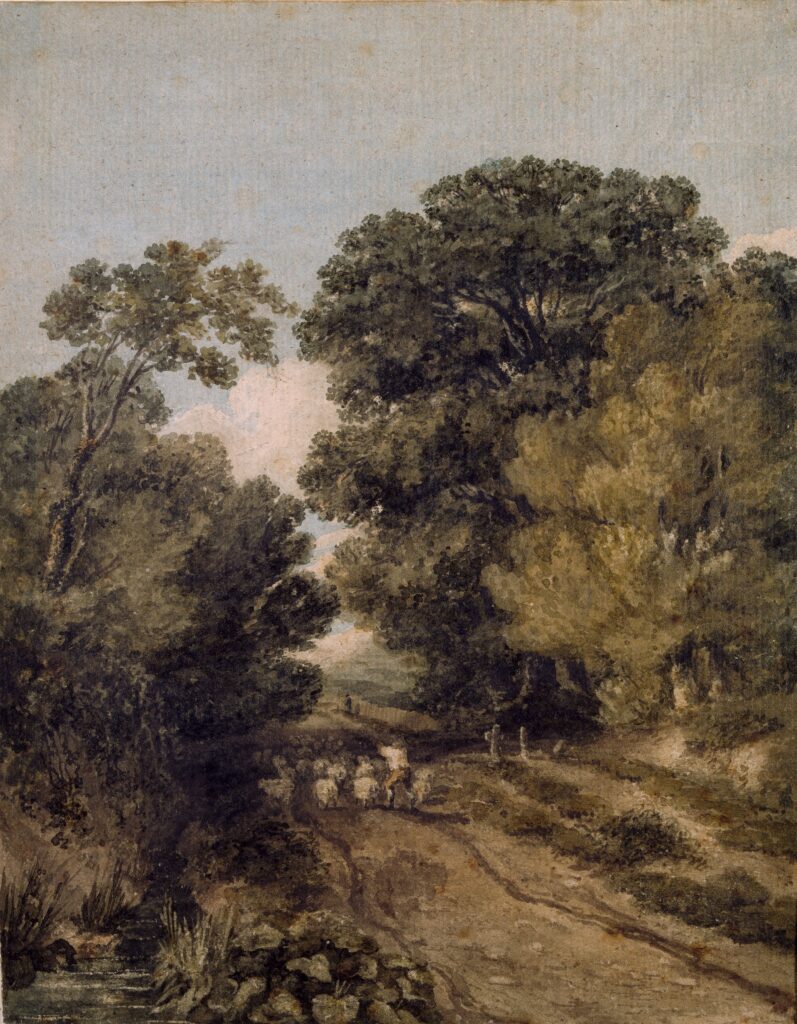
This image is property of images.unsplash.com.
Correcting Mistakes
Remove excess paint with a clean brush
Mistakes happen, but it’s essential to know how to correct them effectively. Remove excess or unwanted paint from your gouache painting by gently brushing over the area with a clean brush. Take care not to smear the surrounding areas and ensure that the brush is clean and free of any residual paint. This technique allows you to subtly remove mistakes or adjust colors without causing any further damage to your artwork.
Lift off paint with a damp sponge or tissue
If removing excess paint with a brush isn’t sufficient, you can employ a damp sponge or tissue to lift off the undesirable paint. Dab the damp sponge or tissue gently on the area you wish to correct, absorbing the excess paint. Be cautious not to apply excessive force or rub vigorously, as this can damage the underlying layers. Using this method, you can rectify mistakes and restore the integrity of your gouache painting.
Use a damp brush to soften edges
Softening edges can be necessary to refine the appearance of certain areas in your gouache painting. Utilize a damp brush to lightly blend and soften the edges between different colors or elements. This technique creates a seamless transition and adds a subtle depth to your artwork. Take your time and employ a gentle touch, allowing the damp brush to smoothly integrate the colors and shapes within your painting.
Scrape off unwanted paint with a palette knife
For more stubborn mistakes or unwanted paint layers, a palette knife can be a useful tool. Carefully scrape off the excess paint using the flat edge of the palette knife, being mindful not to damage the underlying layers. This technique allows for more precision in correction, especially when dealing with thicker or dried layers of gouache paint. Use the palette knife sparingly and delicately, focusing on the specific areas that require adjustment.
Fix errors using light washes or opaque layers
If a mistake is not easily removed or scraped off, you can incorporate it into your artistic process by utilizing light washes or opaque layers. By strategically applying a light wash over a mistake, you can integrate it into the overall texture and composition of your gouache painting. Alternatively, if the mistake cannot be concealed adequately, consider using an opaque layer to create intentional emphasis or focal points.
Protecting the Painting
Allow the painting to dry completely
Once you have completed the finishing touches on your gouache painting, it is crucial to allow it to dry completely. Gouache paint dries relatively quickly, but it is still necessary to give it ample time to dry and set. Rushing the drying process can lead to smudging or damage to the artwork. Allow your painting to dry in a well-ventilated area, free from any potential hazards, ensuring the integrity and longevity of your finished piece.
Apply a fixative or varnish for protection
To safeguard your finished gouache painting, consider applying a fixative or varnish. These products provide a protective layer that prevents smudging, fading, and moisture damage. Select a fixative or varnish suitable for gouache paintings, following the manufacturer’s instructions for application. Applying a fixative or varnish not only enhances the durability of your artwork but also adds a professional finish and enhances the vibrancy of the colors.
Consider framing to protect the artwork
Framing your gouache painting offers an additional layer of protection while enhancing its presentation. Choose a frame that complements the style and size of your artwork, utilizing archival-quality materials to protect against fading, moisture, and environmental damage. Framing also provides an opportunity to enhance the aesthetic appeal of your gouache painting, making it ready for display or exhibition.
Store the painting in a suitable location
When your gouache painting is not on display, it is crucial to store it properly to maintain its quality. Select a location that is away from direct sunlight, extreme temperature fluctuations, or high humidity. Ideally, store your artwork in a protective sleeve, or sandwich it between acid-free papers to prevent dust or accidental damage. Storing your gouache painting in a safe and suitable environment prolongs its lifespan and preserves its original condition.

This image is property of images.unsplash.com.
Enhancing the Presentation
Remove any smudges or fingerprints
Before showcasing your gouache painting, ensure that it is free from any smudges, fingerprints, or other marks that can detract from its visual impact. Gently wipe the surface of the artwork with a soft, lint-free cloth or a special art eraser to remove any blemishes. Taking the time to thoroughly clean your painting demonstrates your attention to detail and presents a polished finished product.
Trim and clean the edges
To give your gouache painting a professional appearance, consider trimming and cleaning the edges. Use a ruler and a sharp craft knife to trim any uneven or unnecessary portions of the paper. This step gives your artwork a clean and refined edge, allowing the focus to remain on the painting itself. Additionally, inspect the edges for any dust or debris, carefully removing them to maintain a pristine presentation.
Sign your artwork
Signing your gouache painting is an important step in establishing your ownership and leaving a personal mark on your artwork. Use a fine brush or pen to carefully sign your name or use a personalized signature stamp. Find a suitable location on the painting that does not interfere with the composition or visual flow. By signing your artwork, you assert your authorship and add value to your gouache painting.
Consider adding a title or description
Adding a title or description to your gouache painting provides viewers with additional context and insight into your artistic intentions. Choose a title that reflects the essence of your artwork, capturing its mood or subject matter. Additionally, consider including a brief description or artist statement on the back of the painting or as a separate accompanying document. These details contribute to the overall professionalism and comprehension of your gouache painting.
Take high-quality photographs for documentation
Documenting your gouache painting through high-quality photographs is essential for various purposes, including online promotion, portfolio building, or exhibition submissions. Use proper lighting, a quality camera or smartphone, and a stable surface or tripod to ensure clear and accurate images. Capture the colors, textures, and details of your painting faithfully, as these photographs serve as representations of your artwork when it is not physically present.
Caring for Your Brushes
Clean your brushes thoroughly
Maintaining the quality of your brushes is crucial for achieving optimal results in your gouache painting. After each painting session and before finishing, clean your brushes thoroughly to remove any paint residue. Rinse them under warm water and use mild soap or a dedicated brush cleaner to eliminate all traces of gouache. Gentle circular motions on your palm or a brush-cleaning pad help dislodge any stubborn paint particles. Rinse thoroughly and reshape the bristles while they are still wet to maintain their proper form.
Reshape bristles while wet
To prolong the lifespan of your brushes, it is essential to reshape the bristles while they are still wet. After cleaning, gently reshape the bristles to their original form using your fingers or a brush holder. Ensure that the bristles are aligned, free from any clumps or kinks. This step prevents deformation or damage to the brush hairs and maintains their capacity to hold paint and deliver crisp, accurate strokes.
Store brushes properly
Proper storage of your brushes is crucial to protect their bristles and overall integrity. After cleaning and reshaping the bristles, allow them to air dry completely before storing them. Avoid storing them upright with the bristles downward, as this can cause water damage to the ferrule and weaken the glue holding the bristles in place. Instead, lay your brushes flat or store them upright with the bristles facing upward. Store them in a clean and dry container to prevent dust or other particles from settling onto the bristles.
Avoid excessive pressure while painting
When working with gouache paint, it is essential to avoid applying excessive pressure on your brushes. Gouache has a slightly thicker consistency than watercolors, and exerting too much pressure can damage the bristles or affect the application of paint. Use a light touch while painting, allowing the brush to glide smoothly over the surface, ensuring precise and controlled brushwork. By adopting this technique, you prolong the lifespan of your brushes and achieve consistent results in your gouache paintings.
Replace worn-out brushes
Over time, even with proper care, brushes can become worn out and lose their effectiveness. As the bristles begin to fray or lose their shape, it may be time to replace them. Worn-out brushes prevent you from achieving precise and accurate brushwork, compromising the quality of your finished gouache paintings. Regularly assess the condition of your brushes and invest in high-quality replacements when necessary to elevate your artistic practice.
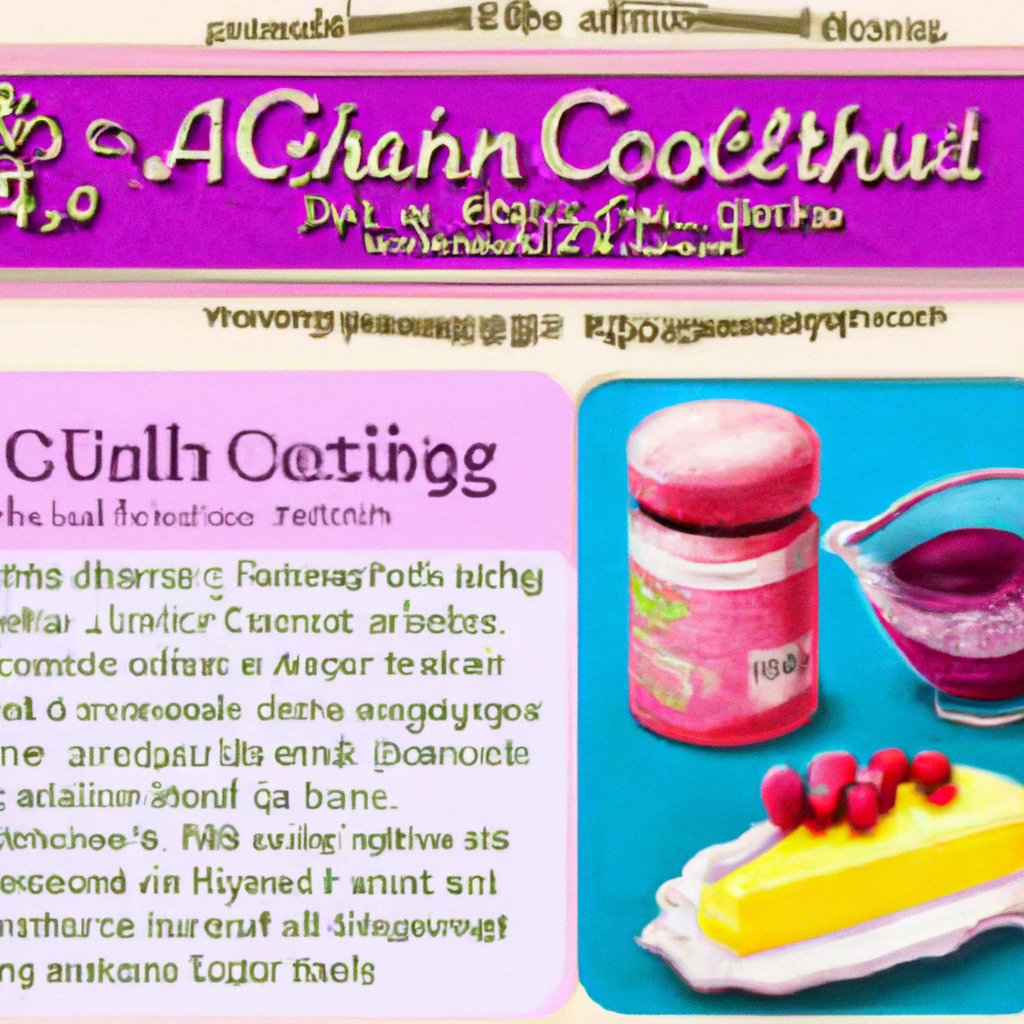
Experimenting and Improving
Try new techniques and approaches
To continually develop your skills as a gouache painter, it is crucial to embrace experimentation and try new techniques and approaches. Step outside your artistic comfort zone, challenge yourself to explore different styles, subjects, or methods. Experimentation encourages growth, allows you to discover unique artistic expressions, and keeps your creative journey exciting and rewarding. Embrace the opportunity to learn from each experiment and integrate newfound techniques into your artistic repertoire.
Keep a sketchbook for practice
One of the most effective ways to improve your gouache painting skills is to keep a dedicated sketchbook for practice. Use this sketchbook as a playground for experimentation, quick studies, and capturing fleeting ideas. Practice different techniques, compositions, and color combinations, allowing yourself the freedom to make mistakes and gain insights along the way. A sketchbook serves as a visual diary, showcasing your progress and becoming a valuable resource for future reference.
Analyze and learn from your finished works
Each finished gouache painting presents an opportunity for self-reflection and artistic growth. Analyze and critically evaluate your finished works, identifying strengths, weaknesses, and areas for improvement. Celebrate your successes and acknowledge areas where you feel less satisfied, but approach this analysis with a constructive mindset. Learn from both positive and negative experiences, identifying patterns or techniques that can be applied to future works.
Seek feedback and critiques
Feedback and critiques from fellow artists or trusted individuals can provide invaluable insights into your gouache painting practice. Seek out constructive feedback from those who are experienced in the medium or from artist communities both online and offline. Share your artwork and openly invite perspectives, suggestions, and views. Embrace the opportunity to receive feedback with an open mind, understanding that it can serve as a catalyst for growth and improvement.
Continuously develop your skills
Improving your gouache painting skills is a lifelong journey that requires dedication and continuous learning. Dedicate time to hone your skills, whether through attending workshops, enrolling in art classes, or exploring online resources. Stay up to date with the latest techniques and trends, and challenge yourself to tackle subjects or styles outside your comfort zone. By continuously developing your skills, you elevate the quality of your gouache painting and expand your artistic horizons.
Displaying and Sharing Your Art
Consider various display options
Displaying your gouache paintings requires thoughtful consideration of different display options. Explore various methods, such as framing, mounting on panels, or using easels, to find the most suitable way to showcase your artwork. Consider the style and size of your paintings, the available space, and the desired visual impact when choosing your display options. Experiment with different arrangements and configurations to create visually appealing presentations that enhance the overall presence of your gouache paintings.
Prepare your artwork for exhibition
If you plan to exhibit your gouache paintings in galleries or art shows, it is essential to prepare them appropriately. Ensure that your artwork is framed, finished with appropriate fixatives or varnishes, and thoroughly dry. Label each piece on the back with your name, title, and contact information. Take high-quality photographs of your artwork for promotional purposes and create an artist statement or description to accompany your exhibition. Careful preparation enhances the professionalism of your artwork and maximizes its impact in a gallery setting.
Share your artwork online or in galleries
Sharing your gouache paintings online or exhibiting them in galleries allows for greater exposure and recognition. Build an online presence through social media platforms or a personal website to showcase your artwork to a wider audience. Consider submitting your paintings to online art galleries or local art associations for inclusion in group exhibitions. Sharing your artwork beyond your own studio allows you to connect with art enthusiasts and potential buyers, creating opportunities for sales and artistic collaborations.
Connect and collaborate with fellow artists
Building connections with fellow artists fosters a sense of community and provides opportunities for collaboration, growth, and inspiration. Attend art events, workshops, or join art-related organizations to meet like-minded individuals who share your passion. Engage in constructive conversations about art, exchange ideas, and explore potential collaborations. Collaborative projects with other artists can often lead to exciting artistic breakthroughs and the creation of unique and impactful artworks.
Promote your artwork through various channels
Promoting your gouache paintings through various channels helps increase their visibility and reach a broader audience. Utilize social media platforms, art websites, and online marketplaces to showcase your artwork and connect with potential buyers or collectors. Consider reaching out to local businesses, cafes, or galleries to explore opportunities for exhibiting or selling your paintings. Actively engage with your followers and maintain consistent branding to develop a recognizable artistic identity and establish yourself as a professional gouache painter.
In conclusion, finishing a gouache painting involves a series of deliberate and meticulous steps. By following the outlined process of preparing, assessing, refining, applying final layers, correcting mistakes, protecting, enhancing the presentation, caring for brushes, experimenting, displaying, and sharing your artwork, you can elevate your gouache paintings to a professional level. Embrace the journey of continuous learning, experimentation, and improvement, and enjoy the satisfaction of bringing your artistic vision to its fullest potential.
